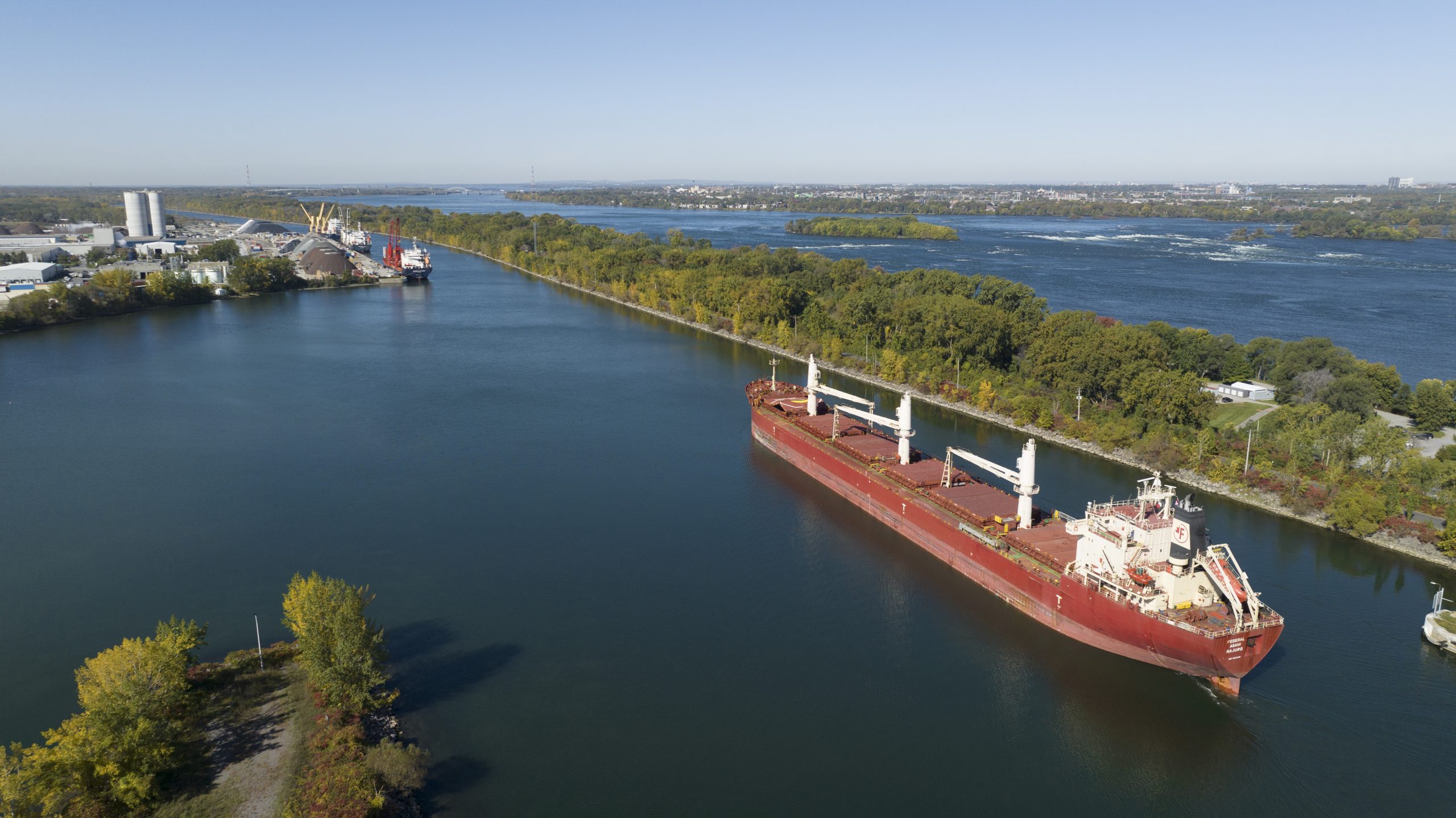A comprehensive independent study of the economic impacts of the entire Great Lakes-St. Lawrence Seaway navigation system for the 2022 shipping season was released today, detailing the billions of dollars in economic activity and hundreds of thousands of jobs supported by the industry.
Titled “Economic Impacts of Maritime Shipping in the Great Lakes-St. Lawrence Region,” the study reviews the industry’s economic impacts from multiple perspectives, and showed that even in a year in which the world was gripped with pandemic challenges, global unrest, and supply chain concerns, marine shipping drove the North American economy forward.
Conducted by Martin Associates of Lancaster, Pennsylvania, the binational study presents results from both a U.S. and Canadian perspective.
An analysis of the “Great Lakes-St. Lawrence Seaway System” is most relevant to American stakeholders because it focuses on cargo traffic to and from Great Lakes ports. The study showed that from this perspective, 2022 maritime commerce supported:
- $36 billion (USD) in economic activity;
- more than 240,000 jobs, which generated almost $18 billion (USD) in wages;
- the movement of 135.7 million metric tons of raw materials and finished goods; and
- $6.3 billion (USD) in state and federal taxes.
An analysis of the “Great Lakes-St. Lawrence River Waterway” is most relevant to Canadian stakeholders in that all Quebec impacts along the St. Lawrence are considered – including those outside the Great Lakes. The study showed that from this perspective, 2022 maritime commerce supported:
- $66.1 billion (CDN) in economic activity;
- more than 355,000 jobs that generated more than $30 billion (CDN) in wages;
- the movement of 252.1 million metric tons of raw materials and finished goods; and
- $12.8 billion (CDN) in taxes.
The study was requested by a public/private sector committee of American and Canadian maritime organizations, with the intent of providing the navigation community, transportation planners, government policy makers, and the public with a credible, independent assessment of the economic contributions made by commercial maritime shipping in the Great Lakes and St. Lawrence region throughout North America.
The industry’s vital contributions to jobs and wages, supply chain strength, business competitiveness across key commodities, and tax revenues provide strong rationale for major governmental initiatives aimed at enhancing infrastructure and improving supply chains. This includes the U.S. Government’s Bipartisan Infrastructure Law and Inflation Reduction Act, which were aimed in part at investing in green technologies and infrastructure enhancement, the Canadian Government’s Green Shipping Corridor Program, which will support increased sustainability within the marine sector, and the Canadian Government’s commitment to establish a dedicated Transportation Supply Chain Office to enhance supply chain effectiveness.
In addition to the information presented in “Economic Impacts of Maritime Shipping in the Great Lakes-St. Lawrence Region,” an additional study detailing the public and private investments made in the Great Lakes -St. Lawrence Seaway System will be released this fall.
Comments from government and Seaway officials
Pete Buttigieg, U.S. Secretary of Transportation: “Every day and in every part of the country, Americans count on goods that move along the Great Lakes and St. Lawrence Seaway. More than 147,000 jobs in America are supported by commerce on the Seaway, and through the Biden-Harris administration’s infrastructure investments, we’re strengthening these critical supply chains and supporting jobs in communities across America.”
Omar Alghabra, Minister of Transport of Canada: “The Great Lakes St Lawrence Seaway System is a crucial part of our supply chains, moving goods to and from Canada and to our international partners. This study underscores the significance of the Seaway System for Canadians, and for our US neighbours. Our Government’s top priority is supporting our supply chains, including in our marine sector, from the launch of a Canadian Green Shipping Corridors Framework to the creation of a Supply Chain Office, and we will continue to work with industry, including the Chamber of Marine Commerce, to build an economy that works for everyone.”
Adam Tindall-Schlicht, Administrator of the Great Lakes St. Lawrence Seaway Development Corporation: “This report bears out what we’ve long known – that the Great Lakes St. Lawrence Seaway System is crucial to the U.S. economy. Not only is marine transportation the single most fuel-efficient and cost-effective way to haul goods from one place to another, but it also supports hundreds of thousands of essential jobs and generates billions of dollars in economic activity.”
Terence Bowles, President and CEO of the St. Lawrence Seaway Management Corporation: “Marine shipping on the Great Lakes / St Lawrence Seaway System supports jobs and provides major benefits to communities across Canada and the United States. Every year this Green Shipping Corridor supports the safe and sustainable passage of vessels shipping the goods that drive the North American economy like grain, cement, ore, construction materials and steel products. This Martin report confirms the strategic importance of the binational St. Lawrence Seaway as an essential link in the supply chain at the heart of trade and commerce.”
The English language version of the study can be accessed at https://greatlakes-seaway.com/wp-content/uploads/2023/07/eco_impact_full_2023_en.pdf
(Photo from St. Lawrence Seaway Management Corporation)





